#neography
Text
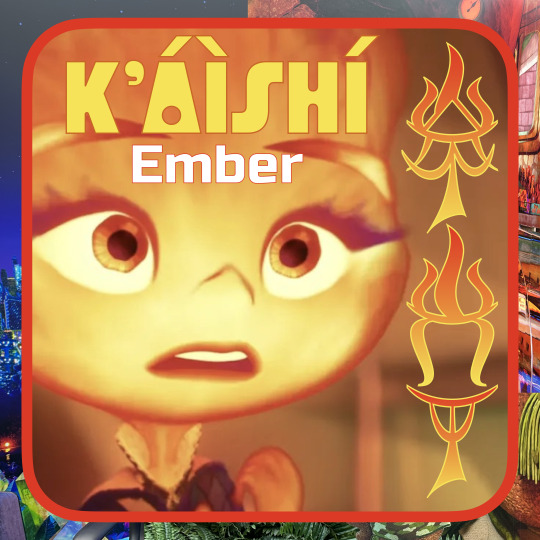
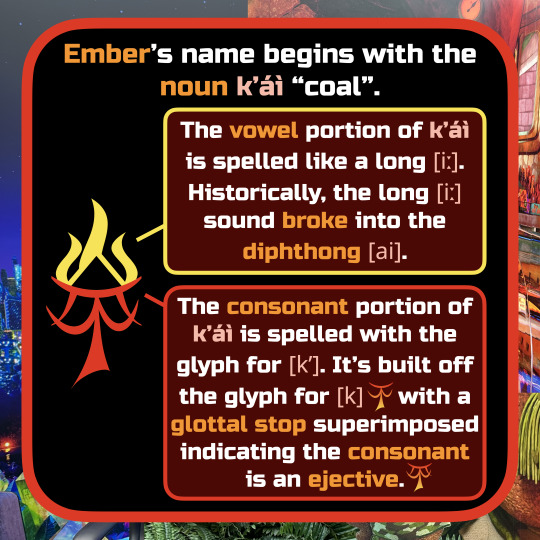


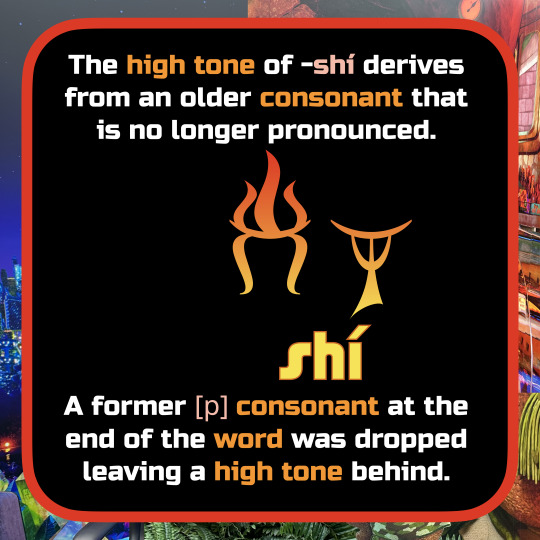

Sharing some Ts'íts'àsh names starting with Ember's. Will share more about the language soon.
#conlang#language#elemental#pixar#pixar elemental#elemental pixar#ts'íts'àsh#ts'its'ash#firish#ember#elemental ember#orthography#conscript#neography#constructed script
623 notes
·
View notes
Text
Thoughts and observations on universal calligraphy applied on neography.
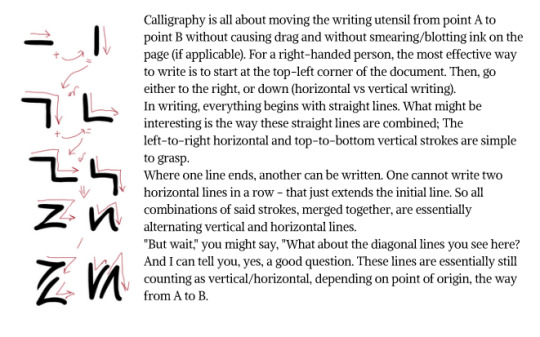





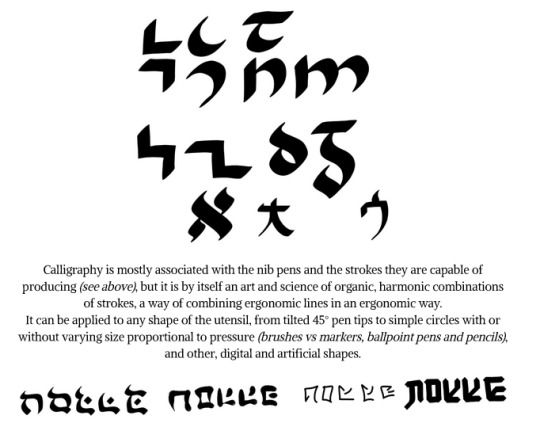

#conlangcrab#conlanging#conlang#constructed language#conlangcrab talks#linguistics#neography#calligraphy tutorial#calligraphy#conscript#art ref#art tutorial#thecrazyneographist
198 notes
·
View notes
Note
if you don't mind me asking, what are you using to write in sdefa? (for both writing systems)
Not at all! For the older writing system I use Inkscape. I have a document set up with a grid guide and a standard line thickness that I can copy from one line to another. For the newer system, I have a font that I made, so I can use pretty much any program that can handle text for that. I designed the glyphs in Inkscape and made the font itself in FontForge.
Here’s a demo of making the word {B C B E} “cat” with a third-person pronoun suffix in both systems:
For the first sytem, each 4-note root word’s glyph is contained within a 6×6 square, which gives everything convenient proportions to get the types of curves I want without having to do lots of little adjustments. Initially I played around with copying and pasting parts of root words, since there are only 12 different note shapes which fit together, but in the end it was easier to just make each new word from scratch.
For the second system, I just set the font (and fixed the fill and stroke settings) and then typed “7274132,” which corresponds to the notes {B C B E E G A}.* Certain glyphs automatically change when a following letter is typed to form ligatures. This word doesn’t have any sharps or flats but if it did they’d be typed with a + or - respectively after the adjusted note.
92 notes
·
View notes
Photo
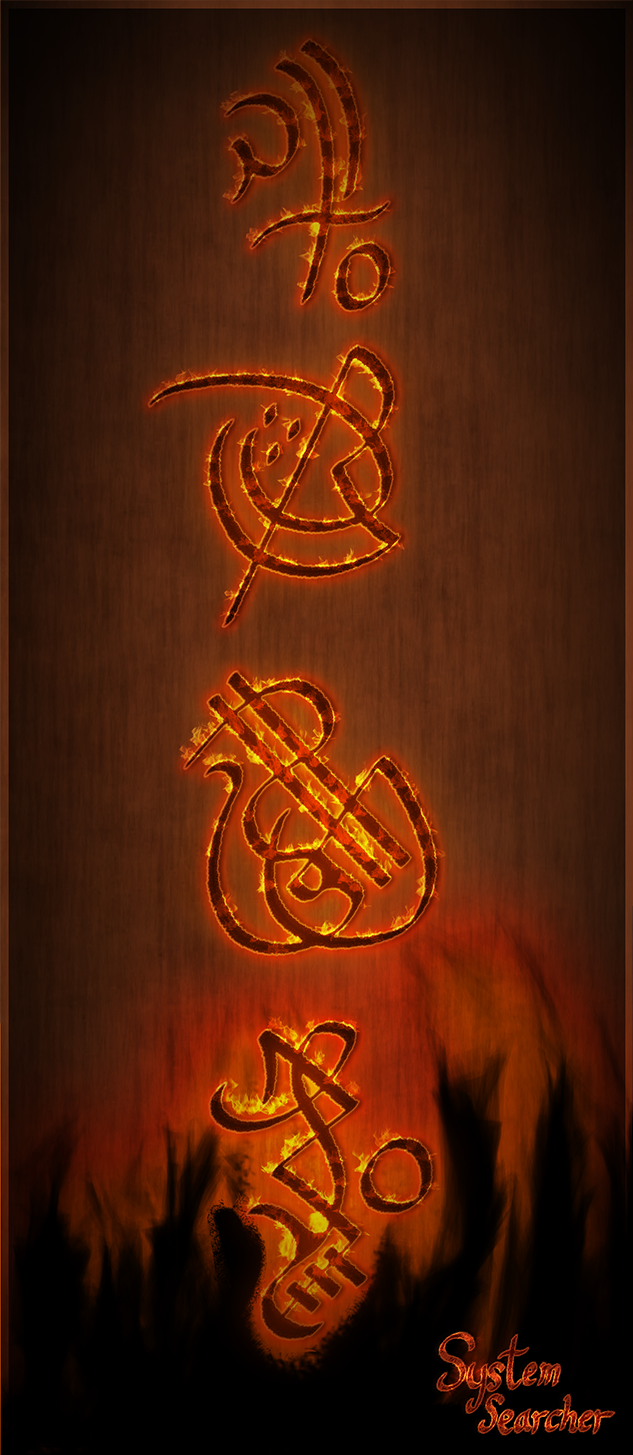
Burnt Sigilage
More correspondence-inspired sigilage
Posted using PostyBirb
92 notes
·
View notes
Text
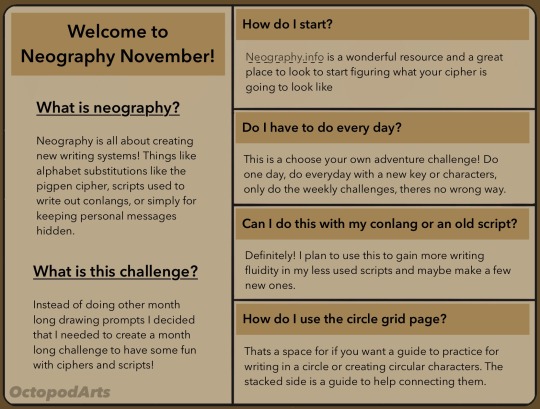
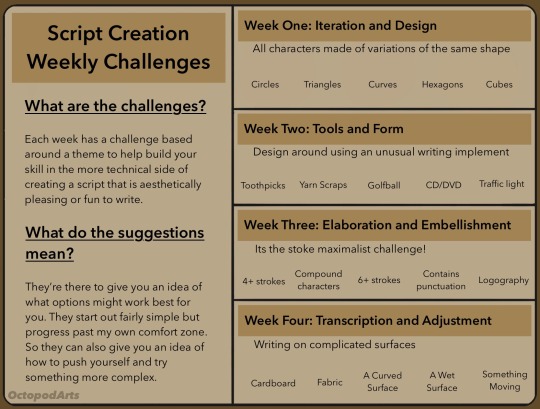
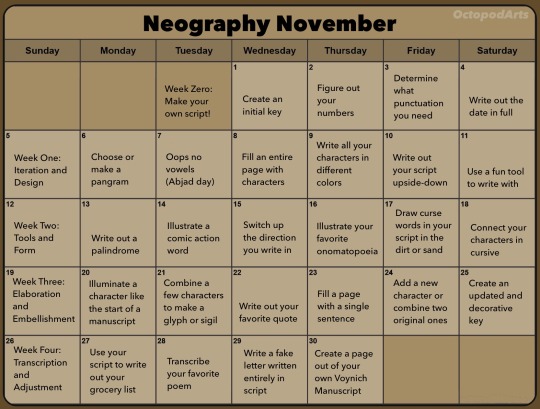



In celebration of this finally being done and in the hope of generating some hype before it starts im releasing my pet project into the wild a few days before its set to start!
Here is a full month long challenge to get people into my favorite hobby with me! Feel free to share this post and tag me in your creations or use the tag Neography November
Under the cut is each of the daily and weekly challenges in an easy to copy list!
Week Zero: Make your own script!
Create an initial key
Figure out your numbers
Determine what punctuation you need
Write out the date in full
Week One: Iteration and Design
Choose or make a pangram
Oops no vowels (Abjad day)
Fill an entire page with characters
Write all your characters in different colors
Write out your script upside-down
Use a fun tool to write with
Week Two: Tools and Form
Write out a palindrome
Illustrate a comic action word
Switch up the direction you write in
Illustrate your favorite onomatopoeia
Draw curse words in your script in the dirt or sand
Connect your characters in cursive
Week Three: Elaboration and Embellishment
Illuminate a character like the start of a manuscript
Combine several characters to make a glyph or sigil
Write out your favorite quote
Fill a page with a single sentence
Add a new character or combine two original ones
Create an updated and decorative key
Week Four: Transcription and Adjustment
Use your script to write out your grocery list
Transcribe your favorite poem
Write out a fake letter written entirely in script
Create a page out of your own Voynich Manuscript
Week One: Iteration and Design
All characters made of variations of the same shape
[Circle, Triangle, Curves, Hexagons, Cubes]
Week Two: Tools and Form
Design around an unusual writing implement
[Toothpicks, Yarn scraps, Golf ball, CD/DVD, Traffic light]
Week Three: Elaboration and Embellishment
Its the Stroke Maximalist challenge!
[4+ strokes, Compound characters, 6+ strokes, Contains punctuation, Logography]
Week Four: Transcription and adjustment
Writing on complicated surfaces
[Cardboard, Fabric, A curved surface, a wet surface, Something moving]
113 notes
·
View notes
Text

Working on the modern version of my new language's script, pretty content with this but may change some things.
112 notes
·
View notes
Text
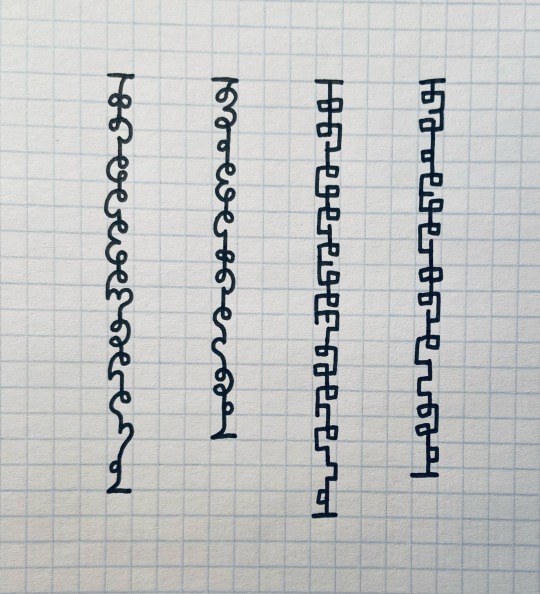
testing out my new conscript! these are just two random meaningless words, in the "cursive" and "grotesque" versions. i wanted to make a script where you could write whole paragraphs without ever taking your pen off the page and i really really love the way this has turned out. Development on the conlang is coming along well! Hopefully I'll have a nice translation ready soon to show off the script more properly.
61 notes
·
View notes
Text
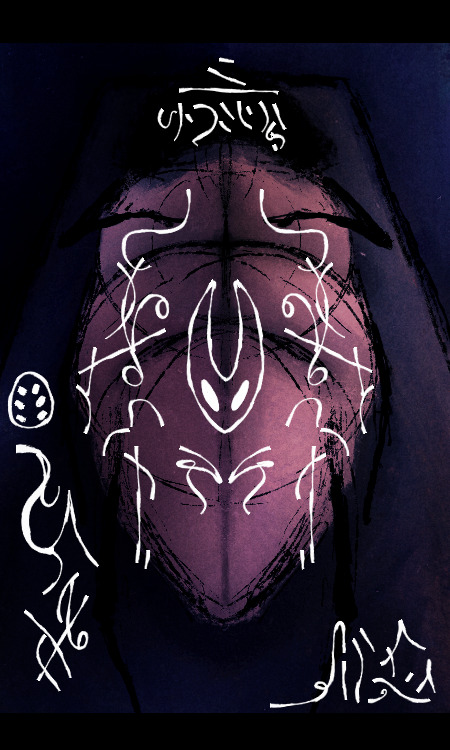
mother
82 notes
·
View notes
Text
HOW TO DO NEOGRAPHY WELL
Step 1: Base lines.

Aka guidelines. Just do an unfilled rectangle and stack it on itself twice.
Step 2: Basic calligraphy
Choose your brush. Different brush shapes have different dynamics, and different dynamics will wield different results on paper.
Best experienced on actual paper, for digital programs cannot give you the exact right feel of drag when you try to do wrong strokes. Usually, if you write by hand on paper, and it's feeling effortless, then you're doing it right.
Cheat sheet for brush tips of different kinds:


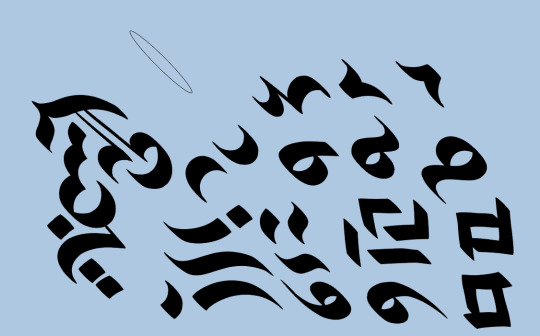
Step 3: The execution
You might want to try asemic writing at first, or take inspiration from other writing systems that already exist. Know that it is nigh impossible to create something that never existed before, for your writing system will always bear similarity to at least a dozen others.
There are multiple methods of making scripts,
Engineered
You set up a goal and plan things up before setting up the canons. Usually used for featural scripts.
Post-asemic
Make an asemic array of symbols and assign them Latin equivalents.
Monogramic
Make a monogram - some complex symbol with lots of strokes - and break it into lesser shapes erasing some of the original strokes. Similar to the Combinatorics method. Example below:
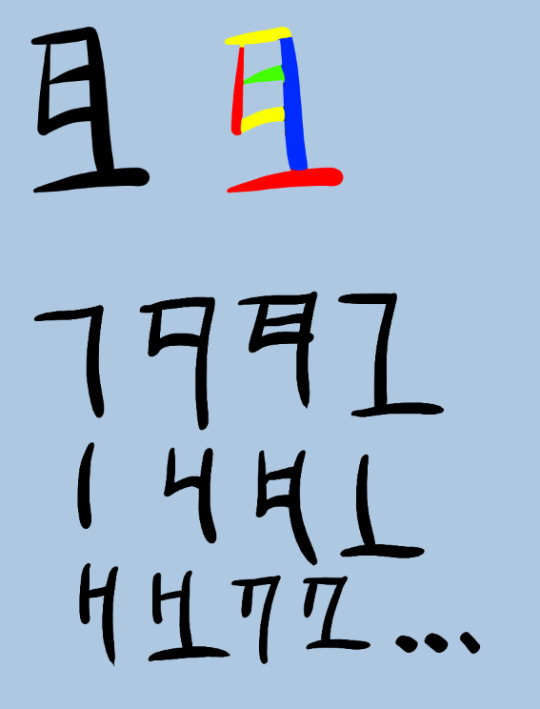
Combinatoric
Make particles, combine in different ways. See below:
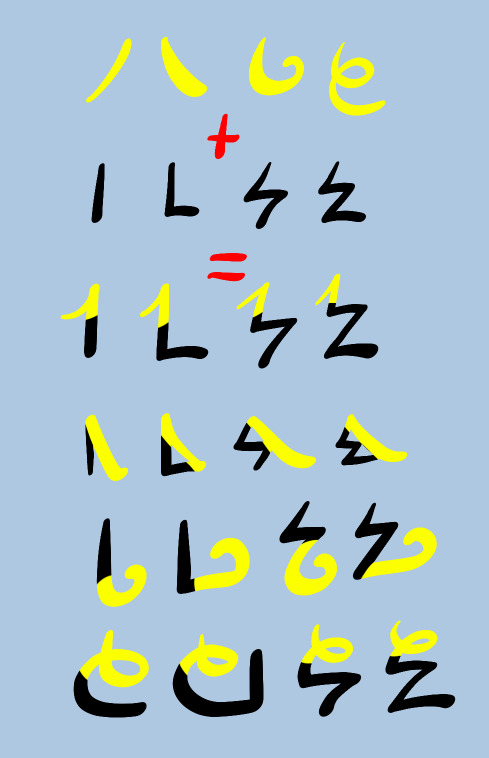
Natural evolution simulation
Following the pipeline "pictogram" -> "letter". As seen below:
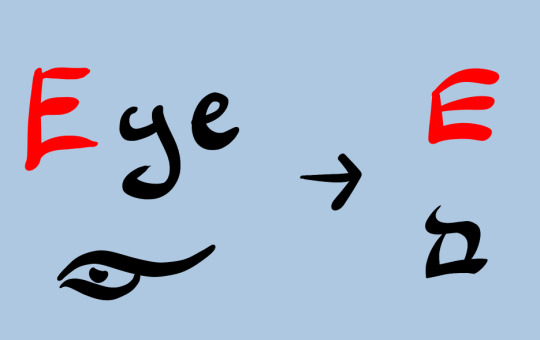
Other useful tips:
Omniglot.com: go there and take a look at how many writing systems are there in the world. This site stores lots of conscripts as well, and you can submit yours if you want to!
r/neography is a huge subreddit that has everything about neography (aka the art of creating new writing systems).
Learn about what kinds of writing systems there are. Basically they are categorized by how much information a symbol carries. It could be one sound, a syllable, or whole words. Though there are nuances, explained on r/neography's wiki, by the way.
Practice. Doodle a lot. You will get the grip of it eventually.
There are 26 letters in the English alphabet. The middle is between M and N, as M is letter #13. If you include numerals, that's 36 symbols. If you include punctuation, that's about 48 symbols depending on how much punctuation you want.
I have a sideblog called @thecrazyneographist meant just for neography, and all the scripts posted there are free to use per request!
Have fun :D
#neography#worldbuilding#worldbuilding tutorial#writing system#script#conscript#writing script#worldbuilder#worldbuilding writing#fantasy world#fantasy worldbuilding#tutorial#helpful#neographist#new writing system#calligraphy#calligraphy tutorial#worldbuilding ideas#worldbuilding tips#world creation#fantasy
169 notes
·
View notes
Text
Darlan
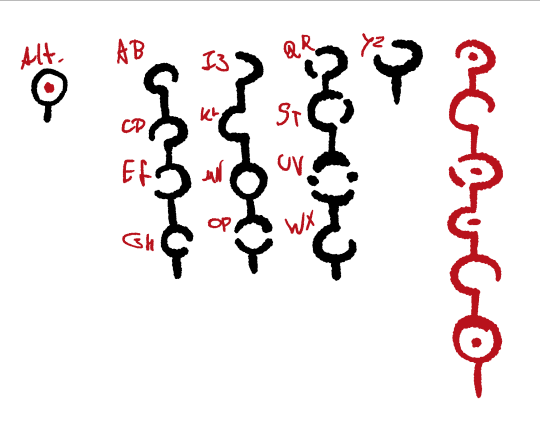
Kinda neet. But eh, yeet.
47 notes
·
View notes
Text
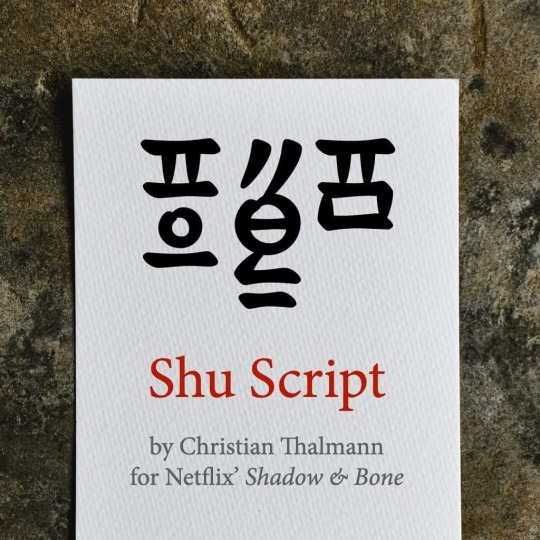



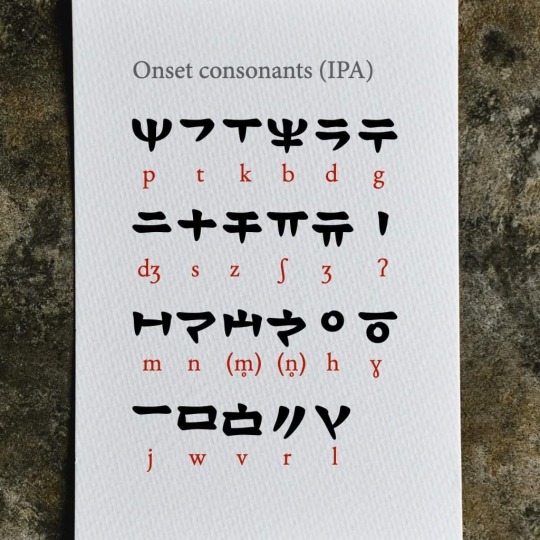


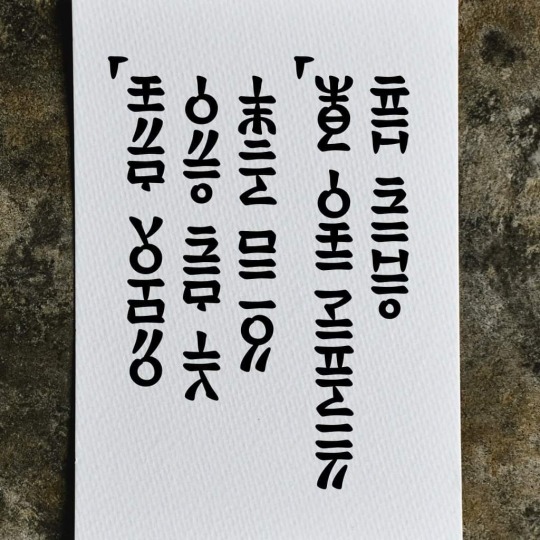
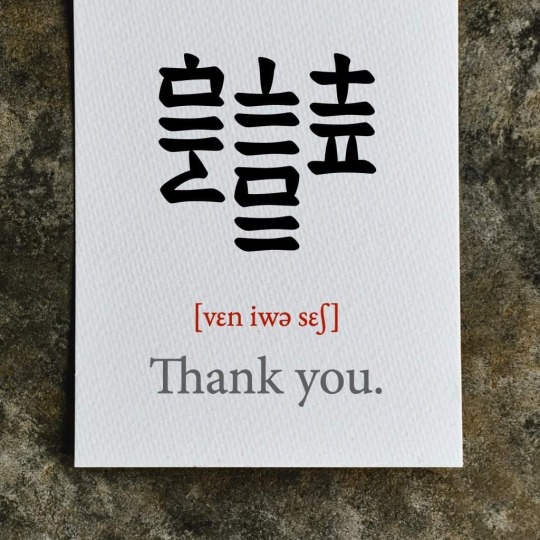
I mentioned that Christian Thalmann got the chance to create a script for Shu for Shadow and Bone. This is it! I knew he’d do an amazing job, and he knocked it out of the park with this one.
715 notes
·
View notes
Text
Someone please stop me from creating a megascript with 551 880 total letters.
77 notes
·
View notes
Text
T’owal T’uesday #12
A few days ago @dedalvs reblogged a very cute image that demonstrates some particles in Ancient Greek. I decided to edit a T’owal version!

All of the T’owal words in the image are actually verbs, but you can use them as prepositions or adverbs as well. In some cases the verb is “to be __” (e.g. “to be above”) but when it’s not as obvious I’ll put the verb version in parentheses. They are:
gyo above · as upon · ul up (climb, ascend) · lid down (descend) · hi in · fdeno on both sides of (surround) · gos out of (exit) · xmes into (enter) · tswos against (touch) · gus under · wan through · dne away from (come/go away from) · syen beside · xi toward (come/go to)
Since there are a few more relevant T’owal verbs, here’s an after picture:

hlon away/apart from · oft’e behind · ts’ana in front of · thyo between (or among) · agsil facing · enk’et tso stuffed with
Some other relevant vocabulary:
dyesi mouse · tsof cat · pwath cheese
The word dyesi is actually a reference to Jessie Peterson, aka @quothalinguist!
Finally, here’s how you say “I know he ate a cheese” in T’owal: Byóx sú í, mám mó pwáth.
59 notes
·
View notes
Text
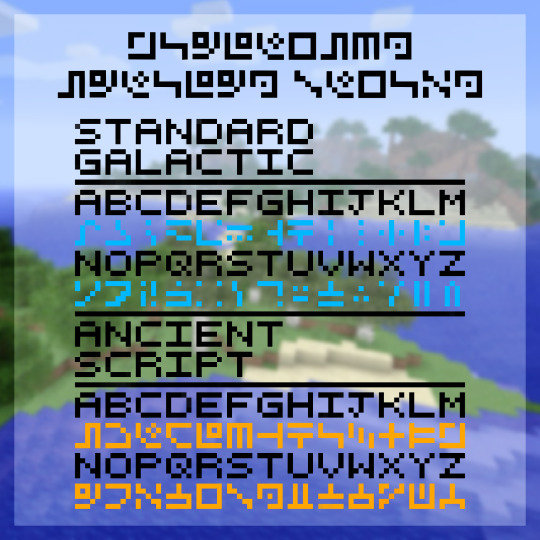
I made a typeface/script a while back based on the Standard Galactic alphabet in Minecraft, making the sizes of the letters consistent and generally more aesthetically pleasing
I call it the Ancient Script because I imagine the Minecraft ancient builders of long ago used it, but now what remains of it is Standard Galactic, used by the player
19 notes
·
View notes
Photo

Yautja Claw
I've been trying to figure out a less... "digital watch" version of Yautja writing for quite a while now. My last attempt was kinda meh, and I think that this time I ended up with something much more satisfying to both write and read.
Posted using PostyBirb
188 notes
·
View notes
Text
The Collective Seraphic Writing System
This post is going to be the one dedicated to explaining how the Seraphic writing system works. This writing system is entirely digital, as physical writing is no longer in everyday use throughout the Collective, so it's a bit inconvenient to actually write out. It's also weird to read, because it's written in a way that makes the assumption that you know how to speak and understand Seraphic, but I'll try to explain what I can.
Seraphic has two written forms: longform and shortform. Longform is used primarily to teach young instars how to read and write, and as a way to show how a shortform word is meant to be read. Shortform is the main form of writing, and due to its complication it's usually put off for a year or two before being taught in pupariums. Shortform is the method I'll be teaching today. It's primarily morpho-phonetic, with elements of both an alphabet and grammatical logograms, and is written bottom-to-top and right-to-left in reverse boustrophedon (the path of writing goes up, flips 180°, and goes back down). Because of this, you're expected to be able to read both right-side-up and upside-down. For this post, I'll be using an example sentence to highlight specifics areas of the writing system, as shown below:

It reads: nJasāğn k'œ̄nan ālxōr e-fya.
"There are 16 dull knives on the floor."
There are seven elements you need to be aware of when writing in Seraphic: the alphabet, class cartouches, procedural and plural ligatures, preposition glyphs, tone diacritics, numerals, and punctuation. I'll be going through each one step-by-step.
Alphabet

The alphabet makes up the majority of Seraphic writing. There are 30 consonants and 6 vowels, and they all arrange into syllable blocks called "cells". Each consonant takes one of three forms depending on if it is at the start of the syllable, before a vowel, or at the end of a syllable. The alphabet is featural, meaning that the way each letter is written is meant to encode its pronunciation. Here is the alphabet in full:

Each consonant (excluding the ejectives) showcases the three variant forms it can take (similar to capital and lowercase letters in the latin alphabet). The largest, leftmost character is the form that hosts the interior vowels within it. The rightmost vertical form is used when preceeding another consonant, and the upmost horizontal form is used at the end of syllables. If a syllable contains a syllablic consonant, the main consonant will have no vowel within it and instead a syllable-final form of one of the syllabic consonants (r, l, m, n, or ŋ) placed on top of it.

Concerning vowels, they are solely meant to be written within consonants, acting sort of like internal diacritics. They cannot exist on their own, nor can more than one be written within the same consonant (Seraphic doesn't allow diphthongs), and if a vowel must be written by itself it is written within the glottal stop letter ' (in this instance acting as an independant vowel holder).

These rules apply to individual syllables. In multi-syllabic words, each syllable cell is arranged together in a specific way based on the number of syllables in order to keep the line uniform and compact.
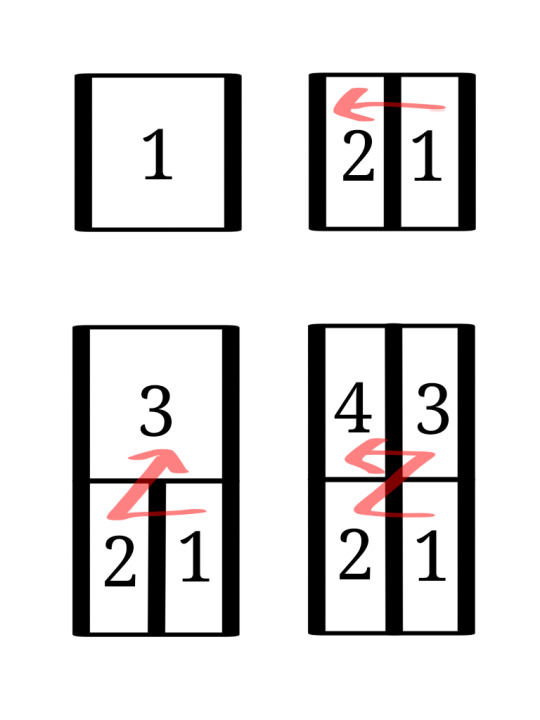
the flow of reading word-internally definitely follows the overall direction of writing (bottom-to-top, right-to-left) so broken down an entire word will usually look like this when written:

Seraphic written in longform will be written entirely using the alphabet. Spaces are put between words, punctuation and numeral symbols are still used, and tone diacritics may be included as well, but otherwise it's entirely spelled out in this way. Writing this way makes the text as a whole quite longer, and can come off as childish or imply you're a new learner of Seraphic, so shortform will usually be used in official contexts. In shortform, alphabetical letters are restricted to non-declined parts of nouns, adjectives, and proper nouns.
Class Cartouches

In Seraphic, there are seven noun classes: Solar (people), Astral (animals), Vital (plants), Terranean (places), Metallic (objects), Lunar (concepts), and Oceanic (everything else). Similarly, the writing system employs seven symbols called "class cartouches" to encode which noun class a word is in. This is drawn from this writing system's predecessor, the Aeonic Seraphic alphabet, that also used glyphs to notate class. These are the seven noun class cartouches:
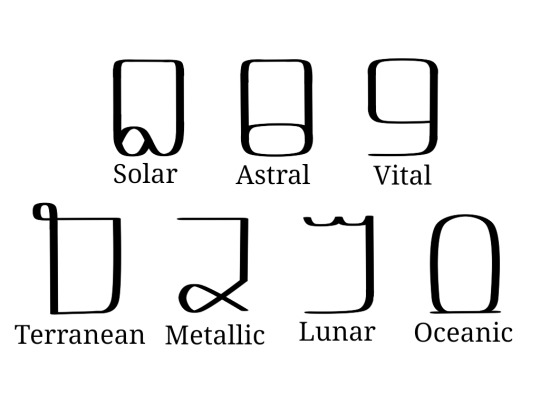
The thing about the class cartouches is, not only is it morphological, but it's also phonetic. A noun is never spelled out in its entirety, usually only part of it is. When a class cartouche is used, it's supposed to stand in for the class prefix itself without having to additionally spell the class prefix in the rest of the word. For example, in the word zājlux (tail), the "-jlux" would be spelled out, and the solar class cartouche would be drawn around it to stand in for the "zā-". Even though you don't write it, you still know it's there because of the class cartouche. Because of the nature of the noun class prefixes, and how many different forms they can take, it can be daunting to have to guess if you're supposed to pronounce a word with a "za-" or a "zo-", but there are patterns to which prefix (and thus, declension patterns), is meant to be read depending on what the following sound is.
Solar class
read as zā before f, v, s, z, c, j, pf, ts, tc and any cluster of two consonants (e.g. zāsā, zāfr, zājlux)
read as zō before x, ğ, h, ', and kx (e.g. zōxō, zōxur, zōğœcl)
read as zē in stressed syllables, and occasionally before consonant clusters (e.g. zēzmp'ux, zēzt'e, zēvasax)
read as s before vocalics (vowels and syllabic consonants), r, l, w, y, n, t, d, p', or k' (e.g. srāc, sēr, sōğœc)
read as ts before t', the ts replacing the t' entirely in pronunciation, for example tsn would be written as (Solar)t'n (e.g. tsn, tsā, tsłzaf)
Astral class
read as ğr before f, v, s, z, c, j, x, ğ, h, pf, ts, tc, kx, p', t', k' and and cluster of two consonants (e.g. ğrzles, ğrxur)
read as x before vocalics, r, l, w, y, ŋ, k, g, p', or t' (e.g. xūc, xŋox)
read as kx before k', the kx replacing k' in pronunciation (e.g. kxa)
Vital class
read as wā before r, l, w, or y (e.g. wāya, wārāc, wāwax)
read as wō before k', k, g, x, ğ, ŋ, or kx (e.g. wōk'ł, wōxur, wō'ōf)
read as wē before consonant clusters (e.g. wēzles, wējlux, wējlozln)
read as ū before n, m, p', p, b t', t, d, f, v, s, z, c, j, pf, ts, or tc (e.g. ūt'u, ūp'n)
read as w before vocalics (e.g. wē, wīn, wājr)
read as wī occasionally before consonant clusters (e.g. wīzya)
Terranean class
read as va before f, v, s, z, c, j, pf, ts, tc and any cluster of two consonants (e.g. vafl, vasērn, vasa)
read as vo before x, ğ, h, ', kx, and consonant clusters (e.g. voxāl, vodsā, vojrayux)
read as vu in stressed syllables and occasionally before consonant clusters (e.g. vujlux, vulvren, vuzajni)
read as f before vocalics, r, l, y, w, m, n, ŋ, p, b, t', or k' (e.g. fe, fruvn, fmağo)
read as pf before p', pf replacing p' in pronunciation (e.g. pfan)
Metallic class
read as ja before f, v, s, z, c, j, pf, ts, tc and any cluster of two consonants (e.g. jafa, javlni, jawaya)
read as jo before x, ğ, h, ', and kx (e.g. joxl)
read as c before vocalics, r, l, w, y, n, t, d, p', or t' (e.g. can, cya, cenaŋx)
read as tc before t', the tc replacing the t' entirely in pronunciation (e.g. tcłvr, tcāŋğl, tcū)
Lunar class
read as la before r, l, w, or y (e.g. lara, layeğr, lalel)
read as lo before k', k, g, x, ğ, ŋ, or kx (e.g. loxir, loğn̄, loxel)
read as le before consonant clusters (e.g. levp'ā, levren, lejt'ān)
read as li in stressed syllables and occasionally before consonant clusters (e.g. liwayi, lit'n̄, livasāx)
read as y before vocalics (e.g. yar, yu, yawu)
read as l/ł before n, m, p', p, b t', t, d, f, v, s, z, c, j, pf, ts, or tc (e.g. lce, łzēwok'u, lvulvren)
Oceanic class
read as a/ā before m, n, p', p, b, t', t, d, s, z, f, v, c, j, pf, ts, tc, w, r, y, l, and all consonant clusters (e.g. ap'i, āt'ē, ācèya)
read as o/ō before ŋ, k', k, g, ', x, ğ, h, and kx (e.g. ōxūr, ōxān)
read as aw/āw before vocalics (e.g. awun, awaf, awaman)
Of course these rules are not hard set, and there are several instances where a written word contradicts these rules or even when two words end up spelled the same, but for the most part these rules will generally be consistent for most written words. It seems like a lot to remember, but usually it's a thing that you eventually develop a sort of "ear" for.

Procedural and Plural Ligatures

The procedural and plural ligatures are additional glyphs used to mark, respectively, the procedurals and the plurals of a noun. The procedural are written at the bottom of the noun (since Seraph is written bottom-to-top and these are prefixes of course), and there are 12 separate procedural symbols in use. Similarly, the plurals, being suffixes, are written at the top of the noun and contain only three symbols (the singular is usually unmarked). They are as follows:
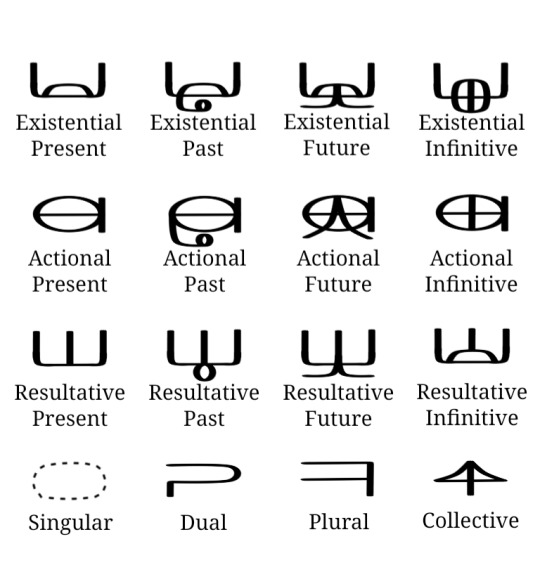
The plural ligatures attach to both nouns and adjectives freely, but in order for a procedural ligature to attach to an adjective, the adjective needs to be put in the oceanic class and subsequently written with the oceanic class cartouche. Additionally, if you want to write remote past/future forms for each procedural, you would need to attach the resultative present ligature underneath the preexisting past or future ligature (these conjugations haven't developed their own separate ligature forms, so they follow the tradition of using the resultative in addition as semantically that is where the remote forms originated). I don't really have a way to show you how to pronounce the plural forms, as even though the different pronunciations are pretty few they're actually pretty inconsistent on which one goes where. It's just one of those things you kinda have to already know. You can check the introduction to Seraphic post to see what forms the plurals can take, but otherwise it's basically, like, memorization. The procedurals on the other hand DO have a predictable pattern of pronunciation, but each tense has a different form based on what class and declension the noun is in, and with six tenses and seven classes each with at least three different declension forms, it's definitely something I can't summarize here. Again I HAVE to make a separate post for that because the declension forms are vital to knowing how to decline properly in Seraphic.
Preposition Glyphs

This section will probably be the easiest to explain really. The preposition glyphs are pretty easy to recognize. They're written in between words, attaching to both of them instead of floating freely like regular words are. There are 19 glyphs for the 19 prepositions, and they don't really change form. Sometimes, if occurring at the beginning of a sentence, they'll have one end sorta lopped off, but not everyone follows through with this convention. Here are the glyphs listed below:
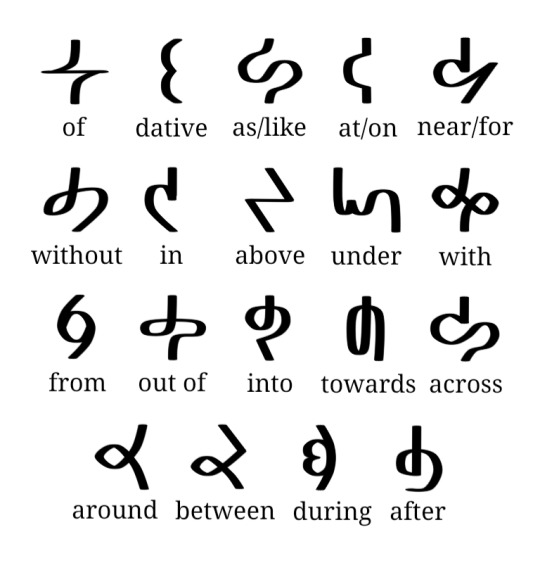
Two or more prepositions can't occur sequentially, it's a very one-at-a-time situation, although in colloquial speech you'll see two prepositions being used in certain instances.
Tone Diacritics

Seraphic is a tonal language, and luckily it has diacritics to indicate the tones. They frame the words on each size, being used on both nouns and adjectives where applicable. You'll usually see them in formal contexts like government documents and letters of address, on signs and boards and menus and any kind of display especially in highly populated areas, in use by those whom are just learning Seraphic and don't have a hang on remembering all of the tones yet, and just in any context where clarity of literacy would be important. In everyday colloquial text conversations and things the tone diacritics will be usually dropped as context is sufficient enough to know, although tone diacritics may be reintroduced to differentiate homonyms that are distinguished only in tone (e.g. lxal "power" vs. łxāl "day"). There are eight individually recognized tone diacritics:

The low tone is the base tone and is usually left unmarked, so there's no sign for just the low tone. When a low tone transitions to a rising or falling though, the low transition diacritic will be used to connect the two. Many of these diacritics are usually connected consecutively when a word requires it, flowing as if they're one larger tone diacritic. This can give a whole host of unique tone symbols, but for the most part, all of the tone symbols can be broken down officially into the 8 diacritics. There isn't a 1-1 correspondence between individual tone diacritics and syllables within a word, usually you can know from context and just knowing how the word is pronounced. For example, the word łxāl would be written with one high tone marker even though the word is two syllables, but it's meant to infer that the entire word is pronounced with an even high tone. Here are some additional examples:
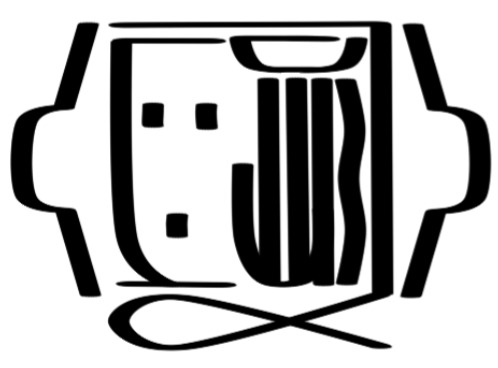
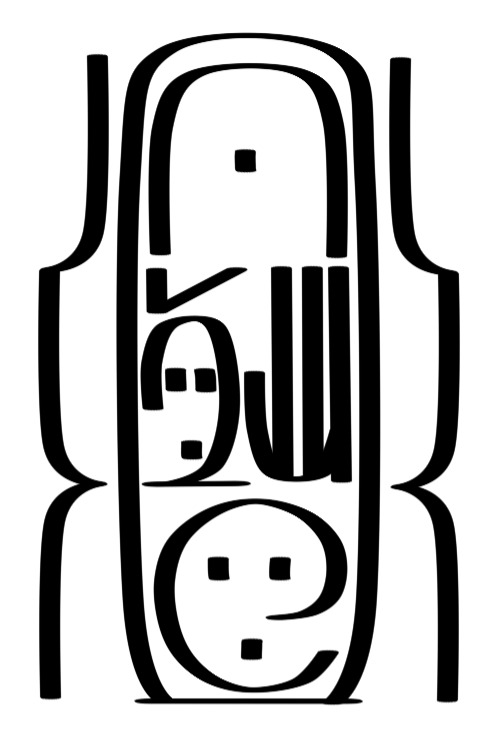
The top example is the word jalzègxa "chronicle". You can see that it uses the two low tone transitions to connect to the central falling tone, representing a low-falling-low relationship. The word below that is māzefādnu "hourglass". It employs a high-low-high, and then a high-low, with the last high-low meant to merge with the high-low-high. So truthfully it's meant to be interpreted as high-low-high-low. There's a lot of possibilities, but breaking it down will simplify what tones are being used specifically.
Numerals and Punctuation

This final section will discuss Seraphic numerals and punctuation. Now, unlike in most human languages which uses base-10, having 10 unique symbols to represent the values of 0-9, Seraphic uses base-16 and represents the values 1-16 with 16 individual symbols. In base 16, we would write 16 as 10, standing for one set of 16 and zero sets of 1. It's written in positional notation like arabic numerals, where each position represents a power of 16 (instead of a power of ten like in base-10). Here are the numerals:
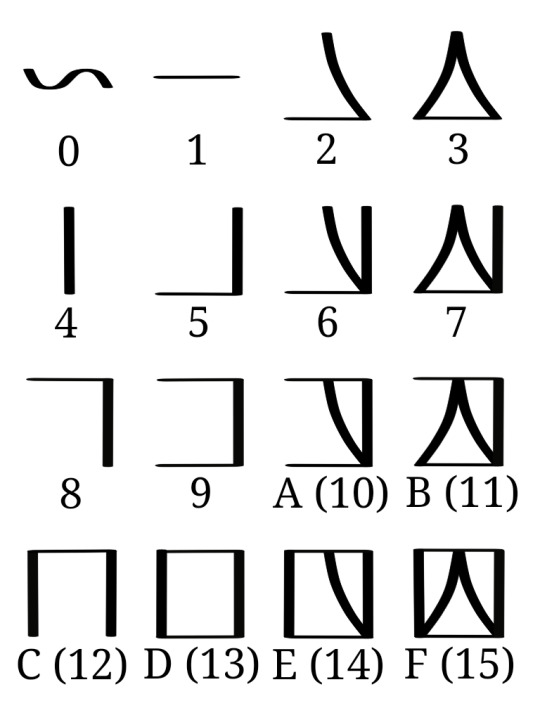
If you were to write a number like 299,792,458; you'd convert it into base-16 which would be 11,DE7,84A; and since Seraphic numerals are grouped in 4 instead of 3 it would actually be 11DE,784A. This is how you'd write that:
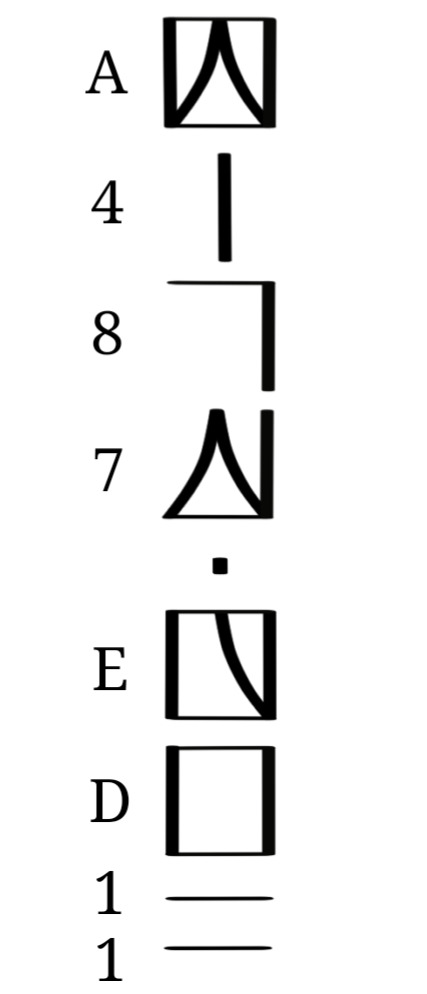
Both Arabic numerals and Seraphic numerals describe the same amount of things, they just group things differently. We group in sets of 10, they group in sets of 16.
As for punctuation, there are only 5 marks that's in standard use, and these are them:
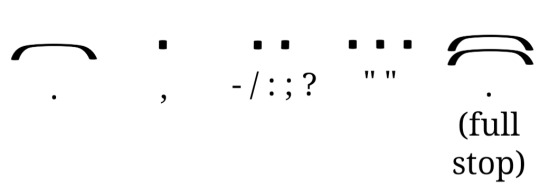
Single bar - separates individual sentences.
Single dot - separates clauses for clarity, separates numerals into groups of four.
Double dot - separates individual words such as in lists or replaces a single dot when separating clause groups.
Triple dot - Distinguishes quotes and dialogue, as well as highlighting names, terms, and titles.
Double bar - used to end full paragraphs/passages instead of a single bar.
Overall, that's pretty much everything I can detail about how the Seraphic writing system works! It's complicated but it was very fun to develop and boy was it satisfying to get it to work. Hopefully you'll now be able to decode a little better Seraphic writing, and maybe even write something of your own!

ŋKowīci cu-stux 'ōf tsa-levp'ā cu-zāsláf pi-lizt'n ğōdjasa! (Thank you all so much for reading!)
#conscript#constructed script#neography#conlang#constructed language#artlang#writing system#orthography#seraphic#collective seraphic#whoa boy this one is even longer#had to do a lot of writing and doodles for this#of course i needed them so itd all make sense#i needed to provide examples#either way i hope this made any sort of sense#ill provide the declension forms soon enough and that should be relatively shorter#idk if it'll be easier to explain though#eh whatever
44 notes
·
View notes